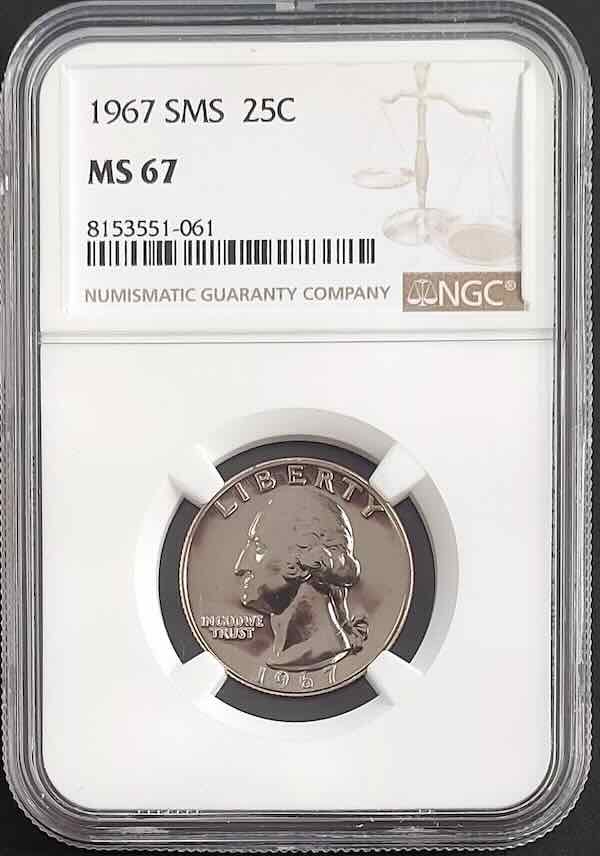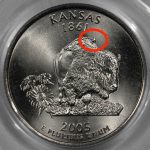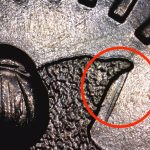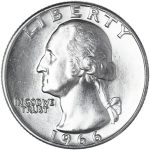How much is a 1965 Quarter Worth?
The 1965 Washington quarter is a unique and transitional coin in U.S. numismatic history. Although it was the first U.S. quarter minted without silver, it still has potential value, especially among collectors aware of specific errors or high-grade specimens. Let’s explore why this coin holds significance, its history, and how it might have hidden value in your pocket change.
Key Summary
- 1965 quarters were the first quarter-dollars minted without silver.
- Most circulated 1965 quarters are worth their face value, but error coins, Special Mint Set quarters and those in mint state condition are worth considerably more.
Transitional Period
The 1965 Washington quarter marks a pivotal shift in U.S. coinage. Before this year, quarters, dimes, and half dollars were minted using 90% silver. However, due to the rising prices of silver and fears that the metal’s value would exceed the coin’s face value, the U.S. Mint transitioned to a copper-nickel alloy. President Lyndon B. Johnson’s Coinage Act of 1965 officially ended silver in dimes and quarters, and these coins were instead struck with a copper core clad in a copper-nickel alloy.
1965 Quarter Value Chart
While most 1965 quarters are worth their face value (25 cents), coins in mint condition or with specific errors can be significantly more valuable. Here’s a breakdown of their approximate values based on condition with references.
The MS (Mint State) grading system reflects the coin’s condition, with higher numbers representing coins that are closer to perfect condition.
The Obverse and Reverse Design
The obverse of the 1965 quarter features the iconic profile of George Washington facing left, designed by John Flanagan. The portrait was initially intended to be a temporary bicentennial commemorative design for Washington’s 200th birthday in 1932, but it became the permanent design.
On the reverse side, an eagle with outstretched wings holds a bundle of arrows, symbolizing strength and preparedness. Beneath the eagle are olive branches, representing peace. Flanagan’s powerful image of the eagle dominates the reverse, reinforcing the coin’s patriotic symbolism.
1965 Quarter Composition and Physical Features
The 1965 quarter differs significantly from its predecessors in composition. Before 1965, quarters were 90% silver and 10% copper, but beginning this year, they comprised 75% copper and 25% nickel over a pure copper core. The coin weighs 5.67 grams and has a reeded edge, a design element used initially to prevent coin clipping when silver was more valuable.
Rare 1965 Quarters and Error Coins
Despite the exceptionally high mintage of over 1.8 billion 1965 quarters, only a few rare coin errors existexist, and numismatists and collectors seek them out.
The 1965 silver quarter is one such error. These coins were accidentally created when some 1964 silver planchets were used for 1965-dated coins. These silver quarters are scarce. Depending on their condition, these 1965 Error Coins can be worth $1,300 to $2,000.

Another valuable error is the 1965 doubled die quarter. This error occurs when a die used in striking the coin is misaligned, which can cause a doubled image on one or both sides. The most obvious signs of doubling are usually found in the words “In God We Trust” or “Liberty,” or in the date. These errors can make a coin worth hundreds in circulated condition or even thousands of dollars in higher grades.
1965 Special Mint Sets
In 1965, there were no S-minted proof quarters produced. The U.S. Mint had suspended proof coin production from 1965 to 1967 due to the coin shortage, and no coins carried the “S” mint mark.
Instead, the mint focused on Special Mint Sets (SMS) for collectors, which were different from the traditional proof sets. These SMS coins were produced in Philadelphia, with no mint mark, and featured a unique satin-like finish, somewhere between a regular circulation strike and a proof finish.
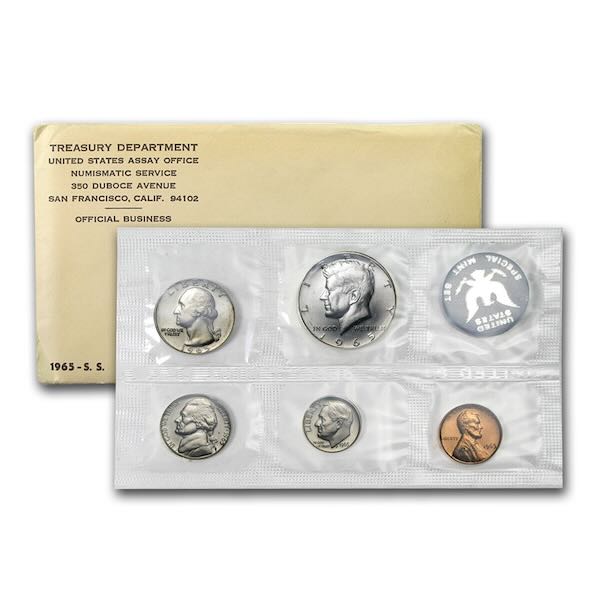
These sets contain coins that are better struck and more carefully preserved than the coins issued for circulation. Quarters from these sets are often in much better condition, which can increase their value to collectors.
The value of these coins, depending on their finish and condition, can range from a few dollars to several hundred dollars for high-grade or cameo varieties.
How to Identify a Valuable 1965 Quarter
While most are worth face value, you may have a valuable 1965 Quarter if it meets one of the following criteria:
- Mint State Condition: Quarters that have been preserved in near-perfect condition can be worth anywhere from a few dollars to several thousand dollars, depending on their grade.
- Error Coins: Look for errors such as the doubled die or a silver planchet. A 1965 silver quarter value with these errors can be worth as much as $8,000 or more.
- Cameo or Deep Cameo Finish: Special Mint Set coins with a cameo or deep cameo finish, which exhibit a frosted image against a mirrored background, are also highly prized by collectors.
Conclusion
The 1965 Washington quarter holds a unique place in U.S. coinage history. While most of these coins remain in circulation and are worth little more than their face value, some rare examples are worth significant money. Collectors should focus on coins in excellent condition or those with minting errors, such as the 1965 silver quarter or doubled die varieties.
If you think you have a valuable 1965 quarter, it’s a good idea to have it graded by a professional coin grading service like PCGS or NGC. Even though most 1965 quarters are not made from silver, the chance of owning a rare, error coin or a high-grade specimen makes it worth investigating further.

